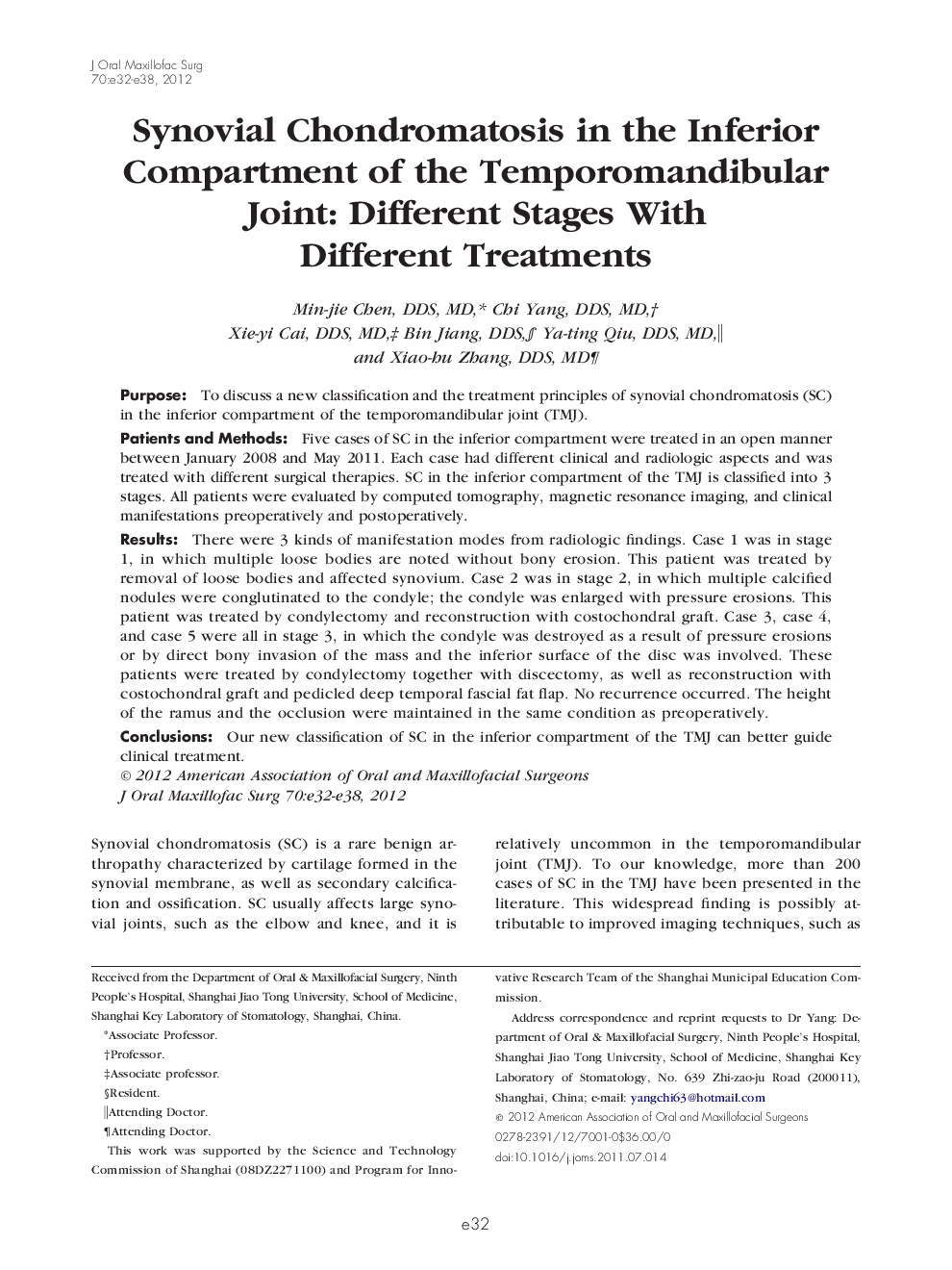| Article ID | Journal | Published Year | Pages | File Type |
|---|---|---|---|---|
| 3156735 | Journal of Oral and Maxillofacial Surgery | 2012 | 7 Pages |
PurposeTo discuss a new classification and the treatment principles of synovial chondromatosis (SC) in the inferior compartment of the temporomandibular joint (TMJ).Patients and MethodsFive cases of SC in the inferior compartment were treated in an open manner between January 2008 and May 2011. Each case had different clinical and radiologic aspects and was treated with different surgical therapies. SC in the inferior compartment of the TMJ is classified into 3 stages. All patients were evaluated by computed tomography, magnetic resonance imaging, and clinical manifestations preoperatively and postoperatively.ResultsThere were 3 kinds of manifestation modes from radiologic findings. Case 1 was in stage 1, in which multiple loose bodies are noted without bony erosion. This patient was treated by removal of loose bodies and affected synovium. Case 2 was in stage 2, in which multiple calcified nodules were conglutinated to the condyle; the condyle was enlarged with pressure erosions. This patient was treated by condylectomy and reconstruction with costochondral graft. Case 3, case 4, and case 5 were all in stage 3, in which the condyle was destroyed as a result of pressure erosions or by direct bony invasion of the mass and the inferior surface of the disc was involved. These patients were treated by condylectomy together with discectomy, as well as reconstruction with costochondral graft and pedicled deep temporal fascial fat flap. No recurrence occurred. The height of the ramus and the occlusion were maintained in the same condition as preoperatively.ConclusionsOur new classification of SC in the inferior compartment of the TMJ can better guide clinical treatment.
